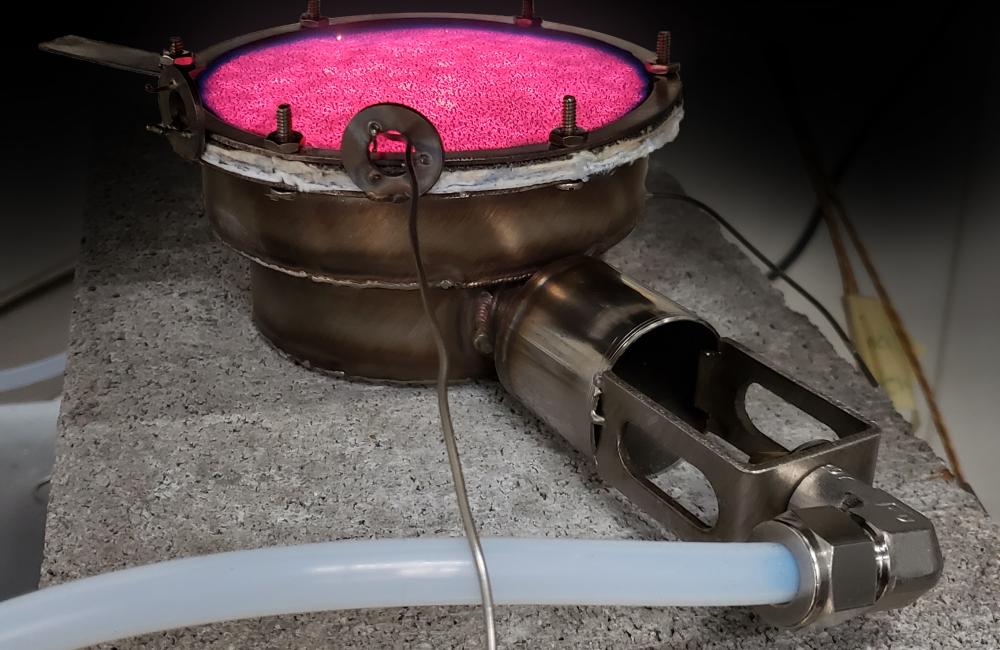
Oak Ridge National Laboratory researchers developed a single burner cooking appliance powered by a blend of 50% hydrogen and natural gas, reducing emissions that contribute to the carbon footprint. Credit: ORNL, U.S. Dept. of Energy
A prototype cooking appliance developed by Oak Ridge National Laboratory uses a 50% blend of hydrogen and natural gas, offering an alternative to safely reduce emissions that contribute to the nation's carbon footprint.
Natural gas-powered appliances significantly increase carbon emissions, but decarbonizing requires using renewable fuels such as hydrogen. ORNL's prototype operates with a flameless burner that relies on heterogeneous oxidation. This approach distributes energy through infrared radiation and over a larger surface, allowing for lower temperature options than conventional burners.
"Safety and emissions are the key challenges associated with adding hydrogen to the fuel mix in a cooking range," said ORNL's Praveen Cheekatamarla. "Our prototype utilized tailored thermal and fluid transfer characteristics to enable burner operation at moderate temperatures in a safe and clean manner."
Future research includes increasing the number of burners within the prototype and running on either 100% hydrogen or natural gas and varying mixes of the two.






